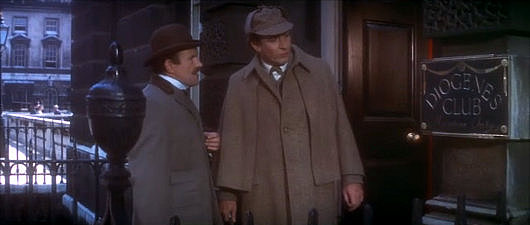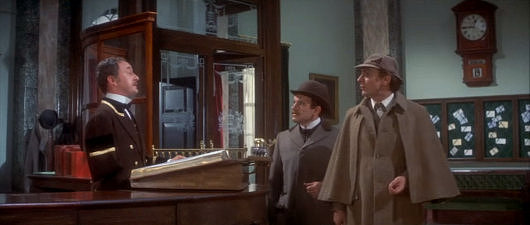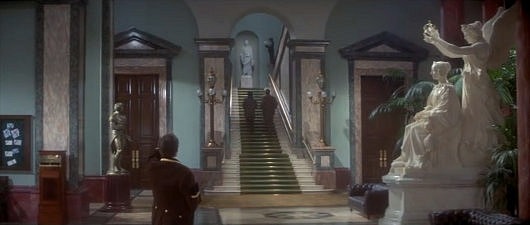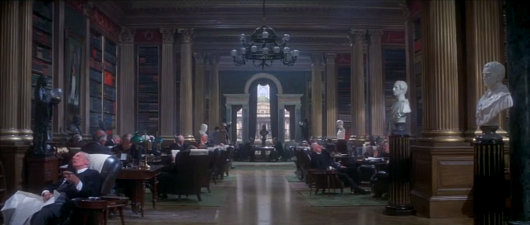London, GB | Formerly of New York, Buenos Aires, Fife, and the Western Cape. | Saoránach d’Éirinn.

About Andrew Cusack
 Writer, web designer, etc.; born in New York; educated in Argentina, Scotland, and South Africa; now based in London.
Writer, web designer, etc.; born in New York; educated in Argentina, Scotland, and South Africa; now based in London. read more
News
Blogs
Reviews & Periodicals
Arts & Design
World
France
Mitteleuropa
Knickerbockers
Argentina
The Levant
Africa
Cape of Good Hope
Netherlands
Scandinavia
Québec
India
Muscovy
Germany
Academica
The Diogenes Club

“There are many men in London, you know, who, some from shyness, some from misanthropy, have no wish for the company of their fellows,” says Sherlock Holmes in The Greek Interpreter. “Yet they are not averse to comfortable chairs and the latest periodicals. It is for the convenience of these that the Diogenes Club was started, and it now contains the most unsociable and unclubable men in town. No member is permitted to take the least notice of any other one. Save in the Stranger’s Room, no talking is, under any circumstances, allowed, and three offences, if brought to the notice of the committee, render the talker liable to expulsion. My brother was one of the founders, and I have myself found it a very soothing atmosphere.”



From “The Private Life of Sherlock Holmes” (1970)
Published at 9:30 am on Thursday 10 December 2009. Categories: Books Cinema Great Britain Tags: Books, Cinema, Sherlock Holmes.
Search
Instagram: @andcusack
Click here for my Instagram photos.Most Recent Posts
- Christ Church December 29, 2024
- A Christmas Gift from the Governor December 24, 2024
- Oude Kerk, Amsterdam December 24, 2024
- Gellner’s Prague December 19, 2024
- Monsieur Bayrou December 18, 2024
Most Recent Comments
Book Wishlist
Monthly Archives
Categories
Home | About | Contact | Paginated Index | Twitter | Facebook | RSS/Atom Feed
andrewcusack.com | © Andrew Cusack 2004-present (Unless otherwise stated)



Might the club used in the film be the Reform?
Can any of your readers settle the issue?
The exterior is within Somerset House, while the interiors were constructed at Pinewood Studios.
Thank you Mr Cusack. I now recognize Somerset House; indeed, there was a time when I walked through that very passage way with fair regularity.
But – “the interiors were constructed at Pinewood Studios”? These days London’s clubs are all too eager to make an extra bob or two by renting out their rooms (some are now little better than hotels or, indeed, film sets); apparently it was different in 1970. One more sign of our unstoppable and precipitous decline.
Quite so; the saloon of the Reform Club alone has appeared in numerous films from the 1990s onward, including two Bond films, the recent ‘Nicholas Nickleby’, and the paltry remake of ‘The Four Feathers’.
Allowing movies to be filmed within clubs is far from ideal, but had I a London club I would easily forgive a few days inconvenience in exchange for lesser fees.
One reason why London clubland is comparatively healthy is that it is also quite affordable, whereas New York clubs are prohibitively expensive to those not well-versed in the realms of finance. I have a theory about why this is so, but will save it for later.
Well, not really, Mr Cusack. The best of the London clubs, Whites, would not think of letting the motion picture people through its doors. There are a few more that have not succumbed: the Turf; Brooks’s and Boodles too perhaps. Real exclusivity is worth an extra few hundred pounds a year.
But back to New York: do give us your promised article soon. My great-great grandfather helped found the Century: I wonder what its fees are these days?
How about the Union, or the Racquet & Tennis? or even the Lotos? A good London club puts one back a thousand a year. I’ll bet the American equivalent is many times that.
The staircase in the picture is the Athenaeum, I believe.
In reply to Mr Clark, you are quite right. Most American clubs are much more in dues and minimums. NY clubs are much less important in NY than London clubs in London. The problem is less getting in, nowadays, than whether you have enough time to waste there. That is why so many clubs in both countries are in financial trouble. In San Francisco, a number have closed in recent years.
No, not the Athenaeum. I had an idea it might be myself, until I checked both my memory and (more decisively) my copy of the Gentleman’s Clubs of London.
It is an unusual design – why two grand rooms on either side of the first flight, when the activities of the club so clearly take place on the first floor?
I would think doors of that magnitude would spend most of their time open. That they are closed suggests there is nothing behind them.
The position of the second flight of stairs after the landing also suggests the illogical setup in relation to rooms below.
All reasons to conclude it is Pinewood Studios, not an actual club building.